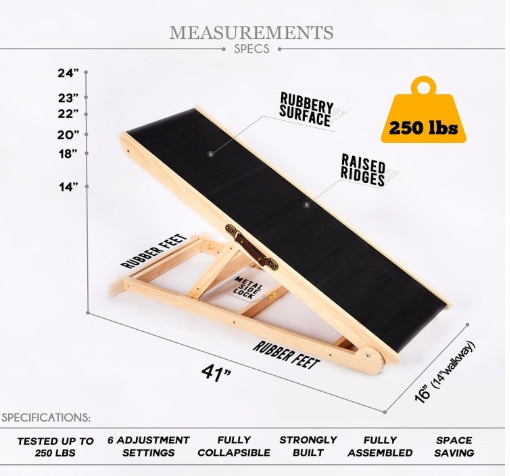Should you add a dog mudroom in your basement?
Simple ways to make your current mudroom pet-friendly and different from a dog room or 'dogio'
I’d been called to my grandfather’s house to help clean up and pack his belongings after his passing. But while my parents and I were clearing out my grandfather’s basement bar and his toolshed, I was doing a few loads of my own laundry. (Team Multi-Task!) But as I walked from one end of the basement to the other, I noticed a flash of color go right by me. My mother was running full speed past my grandfather’s pool table, snatched open a curtain that had been mounted to cover the cubby hole area underneath my grandfather’s steps, and yanked it closed.
Shortly after, I saw my Hound mix come flying down the basement steps and sniffing the air, prowling around to figure out where my mother went. Then, it hit me that my mother was playing Hide n’ Seek with my dog. I wanted to laugh at this child-like moment with the woman who raised me, but I didn’t want to give my dog any hints as to where she was, so I turned back to the basement bar and kept wrapping shot glasses.
ADVERTISEMENT ~ Amazon
As an Amazon affiliate, I earn a percentage from purchases with my referral links. I know some consumers are choosing to boycott Amazon for its DEI removal. However, after thinking about this thoroughly, I choose to continue promoting intriguing products from small businesses, women-owned businesses and (specifically) Black-owned businesses who still feature their items on Amazon. All five of my Substack publications now include a MINIMUM of one product sold by a Black-owned business. (I have visited the seller’s official site, not just the Amazon Black-owned logo, to verify this.) If you still choose to boycott, I 100% respect that decision.
The heavy blackout curtain was surprisingly throwing my dog off, who couldn’t seem to get a good sniff of my mother behind it. But my mother told on herself by poking her head out, and my now-barking dog darted underneath the steps to jump on her thighs. I grinned, watching those two, and got a glimpse of why she insists on calling herself a “grand-dog-mom.” (My older brother has kids, so yes, she is already a grandmother. Meanwhile, you could put me in a room of pit bulls and I’m at ease. Put me in a kindergarten, and I’ll scream and run. I do not have maternal instincts.)
ADVERTISEMENT ~ Amazon
As an Amazon affiliate, I earn a percentage for every purchase with my referral link.
But there was something else I noticed about this basement that I hadn’t before. For more than three decades of hanging out in my grandfather’s basement, he’d never had a dog. (They did have a dog before I was born.) After my mother ran into the human-sized cubby hole under the basement steps, I realized his basement would’ve been a perfect place for a dog room — or a dog mudroom.
Recommended Read: “Set up your shopping list for a mudroom ~ Avoid tracking in all the slush, snow and mud from a messy winter season”
Having a dog mudroom is a little different than having a “dogio” (the dog version of a catio) or an upper-level dog room. Here’s how these three rooms differ.
What is a mudroom?
If you’ve ever had to walk in from a stormy, wet day or hung out at a beach, you know why mudrooms are convenient. These rooms are usually a small entryway or transitional space in a home where people remove (muddy or wet) shoes, coats and sports equipment. This is where picnic and beach supplies are also placed before stepping into the main living areas.
A mudroom helps to avoid bringing in sand, dirt, leaves and other types of debris through the main areas of the house. They have a chance to dry off or provide a specific place to sweep and mop without tracking outside debris throughout the home. For a no-shoes household, this is also a convenient place to stop people from tracking your laminate floors.
These rooms are often near a back door or a garage entrance, but a mudroom can also be in a basement. While unfinished basements often have cement floors and way less worries when it comes to high-traffic walking and rainy days, a basement mudroom can save quite a bit of extra cleanup in finished and furnished basements too. No matter where the mudroom is, coat racks or coat hooks, benches and waterproof flooring usually are included.

What is a dog room?
A dog room, on the other hand, can be treated like any spare bedroom or den. The main difference is that instead of it being a place where a dog can hang out, a dog room is set up specifically for the dog’s enjoyment throughout the entire room. Supplies like a feeding station, grooming supplies, a dog bed and dog toys will definitely be in this room.
Recommended Read: “Creating the dog room of your pup's dreams ~ What you should and shouldn't have in a room for your pets, especially if they'll be alone for long periods of time”
What is a dogio?
While the term “dogio” hasn’t caught on anywhere near as much as a catio, the latter term describes an enclosed outdoor space for cats (i.e., patio) to enjoy fresh air and sunshine while staying safe from predators and traffic. While dogs can usually run around in a backyard, because cats tend to be more agile and may end up straying out of the yard, this is a worry-free way for them to roam around without cat owners being scared that they’ll be attacked by coyotes, raccoons, foxes, birds of prey (ex. owls, hawks, eagles), snakes, bobcats and aggressive dogs. A catio is often a window-mounted enclosure or a large, backyard playpen.
Recommended Read: “Should puppies have a dog version of a catio? ~ When puppies are too small to walk for long or play while unsupervised, is a dogio the answer?”
ADVERTISEMENT ~ Amazon
As an Amazon Affiliate, I earn a percentage for each purchase with my referral links.


What is a dog mudroom?
Whether you choose to make a section of your basement into a dog mudroom or make your current mudroom more pet-friendly, both of these rooms are ideal. Why? More often than not, the floors are already waterproof. If you’re training a puppy who occasionally has pee accidents or loves to roll around in smelly grass, a dog mudroom is an ideal spot for this dog to enter.
If you already have the nearby plumbing to do so, a dog mudroom is an easy space to add a dog shower. Whether you want a built-in pet washing station or a mobile walk-in shower, a basement has way more room to choose where you want it versus a bathroom.
Recommended Read: “Is installing a dog shower worth it? ~ Perks of bathing your puppy with a dog shower attachment”
Additionally, you can add a dog closet that would include leashes, towels and grooming supplies. (If you use a blow dryer to expedite the drying process for your dog, make sure to take off any dog tags that can easily get too hot and cause your dog discomfort.)
And that’s about all you need. Unlike a dog room where dog food and water bowls, crates, toys and dog beds would be, the goal of a dog mudroom is intended to be a pit stop. It’s the place your dog goes after rolling around in the sand at a pet-friendly beach, hanging in a dog park, or running through a small swimming pool or lake water at the dog beach. Once your dog has been dried off, shampooed, brushed, combed and won’t stink up the couch, you can let your pet come out of the dog mudroom and wander around the rest of your home.
Shamontiel is a dog lover to her core: 632 completed walks with 101 dogs, eight dog-housesittings and six dog boardings at the time of this publication.
Did you enjoy this post? You’re also welcome to check out my Substack columns “Black Girl In a Doggone World,” “BlackTechLogy,” “Homegrown Tales,” “I Do See Color,” “One Black Woman’s Vote” and “Window Shopping” too. Subscribe to this newsletter for the weekly posts every Wednesday. Thanks for reading!







